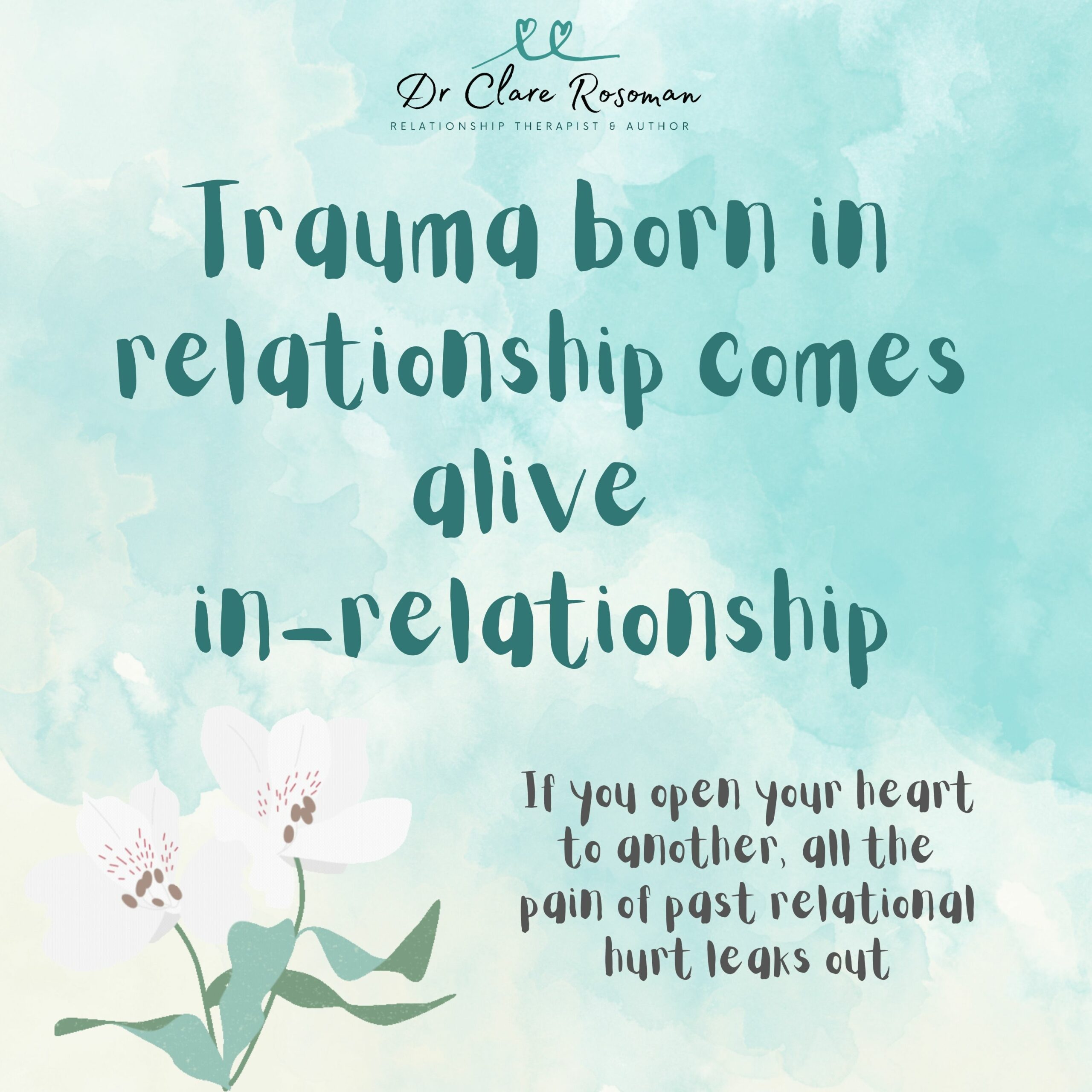Eye Movement Desensitisation and Reprocessing (EMDR) therapy is a psychotherapeutic approach based on a range of psychological, physiological, and neurobiological principles known as the Adaptive Information Processing (AIP) Model. It is an integrative, comprehensive therapy comprised of eight phases that form a set of standard psychological procedures by working through history-taking and preparation, memory reprocessing, and re-evaluation and re-consolidation. EMDR views individuals’ presenting issues and symptoms (such as extreme distress, anxiety, nightmares, flashbacks, avoidance, numbing etc) as stemming from dysfunctionally or maladaptively stored traumatic memories and their associated cognitions (patterns of thinking) and physical sensations. EMDR aims to help by processing traumatic memories and consolidating them in our memory, so that they can become a part of our life narrative – less intense and recalled with less distress.
The overarching goal of EMDR is to resolve these maladaptively stored memories through desensitisation and adaptive resolution by reprocessing and consolidating.
What does an EMDR session look like?
During EMDR the client is guided to deliberately bring into conscious awareness the sensory memory of a traumatic event, their thoughts, and the accompanying emotions and bodily sensations. Clients need to be willing to experience the emotions and body sensations that accompany the recall of a distressing memory and associated thoughts.
This is quickly followed by the client following the moving fingers of the therapist (or sometimes a moving dot on a screen. The client’s eyes move rapidly from side-to-side for a brief period, around 30 seconds. This produces a distinctive pattern of electrical activity in the brain, which appears to result in a change to the trauma memory. The exact mechanisms in the brain which cause the memory to change has not yet been discovered, but the regions of the brain involved with sensory storage, emotional activation and reasoning all become more active, with changed patterns of nerve cell firing.
During the eye movement the therapist rarely talks or offers suggestions. The client does not try to change any aspect of the memory, and is asked to just notice the experience, to observe their memory, emotions, bodily sensations and thoughts. At the end of each set of eye movements the client is then asked to report their present experience. It may be that the sensory memory becomes less detailed or less vivid, and clients often report that the memory has become quite distant. Commonly the emotional or bodily sensations reduce in intensity quite quickly. If other associations are observed, they are shared with the therapist. Simple traumas can be treated in a single session. Older and multiple traumas can require several sessions.
The Adaptive Information Processing (AIP) Model
Dysfunctionally stored, unprocessed disturbing memories are stored physiologically, in an episodic ‘state-specific form’, as they were experienced and perceived at the time of the adverse life experience/event.
Without reprocessing and integration into wider adaptive memory networks, dysfunction may occur when the memories of disturbing events are triggered and the associated encoded distressing emotions, beliefs, and physical sensations emerge along with their associated patterns of hyper- or hypoautonomic arousal, and behavioural and relational responses.
Unprocessed (or incompletely processed) dysfunctionally stored memories are the basis of psychopatholog
Symptom reduction, resolution, or elimination altogether is thought to occur when the memories underlying symptoms are processed, integrated, and consolidated into existing adaptive memory networks, that can then form the foundation for healing, development, and growth.
The nature and level of disturbances that occur at the time of an adverse life experience disrupts our memory processing and due to the real or perceived threat, these experiences are invariably associated with a high level of autonomic arousal.
Therefore, the unprocessed memories of adverse life experiences result in trauma-related symptoms such as maladaptive cognitions and negative self-beliefs, pervasive dysregulation of emotion, avoidant and defence/protective behaviour in the present that impact daily life functioning and relationships. Perceptions of current situations link into networks of stored memories to be interpreted, so if a network containing an unprocessed memory is triggered, the current response is informed by the emotions, sensations, thoughts and beliefs associated with the earlier event, and ‘the past becomes present’, characteristic of trauma-related phenomena such as flashbacks.
How Does EMDR work?
Resolving Trauma with EMDR
- A traumatic event is any experience, in which a person is exposed to a threatening or harmful event, and experiences strong negative emotions, or helplessness. Examples include rape, sexual assault, domestic violence, being in or witnessing a holdup or motor vehicle accident, witnessing an unexpected or violent death, being in a natural disaster or being caught up in conflicts or war. Traumatic events can also include emotional abuse.
- Overall, EMDR therapy involves a three-pronged protocol for addressing dysfunction, targeting:
- Past events, which act as experiential contributors underlying current dysfunctions (prime a fear response in the present).
- Present situations, that trigger reminders of the traumatic event such as disturbances of affect, thinking, relating, and/or behaviour.
- Future functioning, which may require overcoming avoidance, and the incorporation of new skills for daily living.
Applications for EMDR
Whilst EMDR was initially developed for the treatment of trauma-related mental health issues such as PTSD, emerging research has found efficacy for it's use in treating the following conditions across the lifespan:
- Posttraumatic stress disorder (PTSD)
- Depression (including relapse prevention)
- Anxiety (including panic, phobia, and behavioural/somatic symptoms)
- Psychosis
- Bipolar disorder
- Substance use disorder
- Attachment and early childhood interpersonal trauma
How a “traumatic memory” differs from a normal memory
We can think of the memory of a traumatic event as consisting of three components: the sensory memory, the emotional memory, and its meaning. The sensory memory is stored in the sensory cortex of the brain, where the details of sight, sound, smell, etc. are encoded. There are many different sensory elements which make up a traumatic event, and our recollection of a recent trauma often consists of sensory fragments of the event, rather than a complete and coherent memory. A traumatic memory is typically vivid and often detailed in some aspects but lacking detail in others. For example, a person in a holdup may recall the detail of the weapon, but not recall what the robber was wearing. Whereas non-traumatic memories generally fade over time, losing their vividness and detail, untreated traumatic memories are often recalled with vividness, and a sense of being present (“I remember it just like it was yesterday.”). Non-traumatic memories are recalled with a clear sense of being in the past. Traumatic memories are experienced as flashbacks, disturbing dreams, or a sudden sense of re-living the event.




The Phases of EMDR Therapy
Phase 1: History Taking & Treatment Planning
In EMDR therapy, case conceptualisation is based on the AIP model, such that current dysfunction is traced and connected to past experiences. The overall aim is to gain a clear picture of the client’s clinical landscape, so that realistic therapeutic goals can be collaboratively set, appropriate sequences of target memories can be identified, and a treatment plan developed to respond comprehensively to address the presenting problems and symptoms.
Phase 2: Preparation
Preparation involves the development of a therapeutic relationship, through which the aim is to adequately prepare the client to have the capacity to regulate and know they are supported as they move towards memory reprocessing phases. Preparation may require instruction in affect regulation, developing coping techniques, and the identification and enhancement of adaptive memory networks through a processes called resource development and installation. Emotional regulation, safety and trust in healthy connection, and capacity to connect to adaptive memory networks are a focus of preparation to ensure the memory reprocessing phases of treatment are tolerable, effective, and efficient.
Phase 3: Assessment
The goal in this phase is to identify the primary components of a memory which has been selected for reprocessing and to activate the memory. The memory targeted for processing is of an adverse, negative, or traumatic life event or experience that is hypothesised to be underlying the symptom the client wishes to change. In complex cases, with multiple trauma experiences and/or life-long trauma memory networks, new targets may emerge as processing proceeds, and at times treatment requires return to the preparation phase to ensure the client has the integrative capacity to reprocess these memories at this time.
Having selected the target memory for reprocessing, the client is instructed to notice the memory by focussing on the image that represents the worst part of the trauma experience, identify the associated negative cognition (i.e. I am bad, or I am not safe). The therapist then helps the client to identify the antidotal positive belief (i.e. I am ok, or I am safe), and the client rates the validity of the truth of how this positive belief feels. With the targeted memory and the negative belief the client then notices the emotions and body sensations that are associated, rates the distress of this on the Subjective units of distress scale (SUDs), and with this activation of the memory reprocessing phases can commence.
Phase 4: Desensitisation
As the client notices the targeted image, thoughts, feelings and body sensations, the therapist administers sets of dual attention bilateral stimulation. Between sets the client is asked to report whatever they notice, including images, thoughts, emotions or sensations. Based upon the response and guided by standardised procedures, the therapist asks the client to focus on whatever is present and again to “let whatever happens happen” and “just notice” during the next set.
What is most frequently observed during this phase is that the targeted image becomes less vivid and distressing. As the memory desensitises the forging of associative links between the memory of the adverse life experience and more adaptive memory networks occurs, as new thoughts, insights, emotions and memories spontaneously emerge. Standardised procedures are used to guide the client’s focus through various aspects of the memory network, until the distress associated with the memory is completely dissipated or ‘metabolised’ (i.e. SUDS related to the target memory is 0/10), and the memory has been reprocessed to an adaptive resolution.
Phase 5: Installation
When the distress associated with the target memory is completely dissipated and fully metabolised, the therapist can then proceed to the installation phase. The goal in this phase is to hold the target memory in mind linking it to the positive cognition. Holding the target memory and the positive belief in mind the therapist continues to administer sets of dual attention bilateral stimulation to strengthen the client’s belief in the preferred cognition. The aim here is that if the memory comes to mind in the future there is a neural connection to positive adaptive self-beliefs that will also be activated.
Phase 6: Body Scan
The therapist checks that there is no residual disturbance in the body related to the target memory activated with the positive belief. Asking the client to hold the memory and the preferred cognition in mind, the therapist instructs the client to scan from their head to their toes for body sensations. Any residual disturbance may require further sets of dual attention bilateral stimulation, until the body tension has resolved. Pleasant body sensations may be enhanced with one further set of dual attention bilateral stimulation.
Phase 7: Closure
Each memory reprocessing session ends by ensuring that the client knows what to expect between sessions, as some processing may continue. Closing the session involves praising the client for the work they just engaged in, reminding them of the regulation techniques and supports they can use between sessions, and to ensure they feel safe, grounded, and present prior to leaving the session.
Phase 8: Re-evaluation
Subsequent treatment sessions begin with a re-evaluation of the client’s experiences since the last session, any symptoms or issues arising, and a re-evaluation of the target memory reprocessed in the previous session. An assessment may also be made of the degree to which full processing of any target memories has resulted in a ‘generalisation effect’, whereby the client has experienced the spontaneous reprocessing of associated memories and a general improvement in emotional and social well-being. A new memory will then be selected for processing as the client and therapist collaboratively agree on the next symptom to target within the overall treatment plan.


